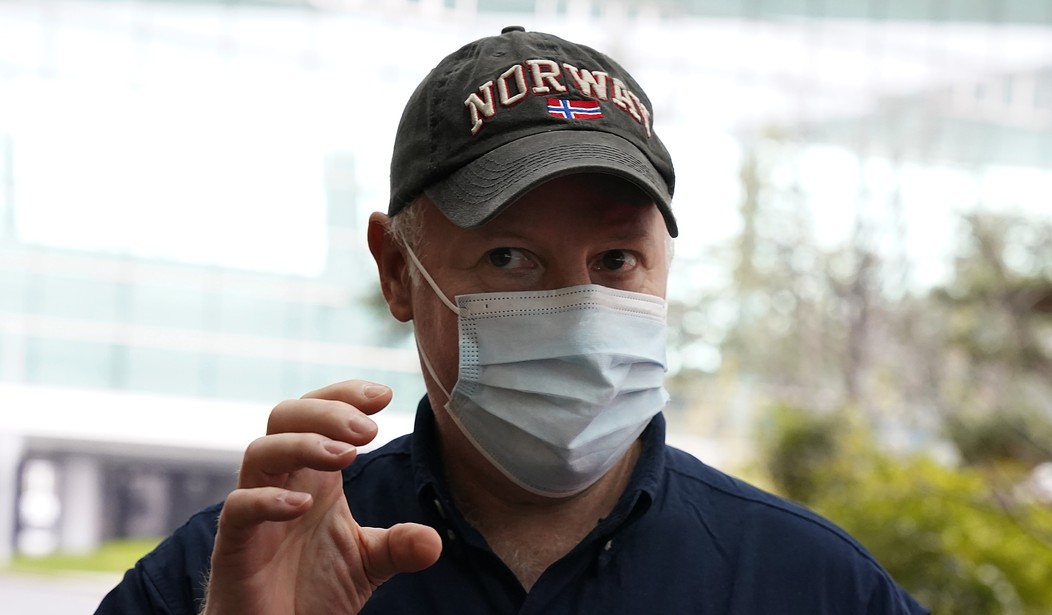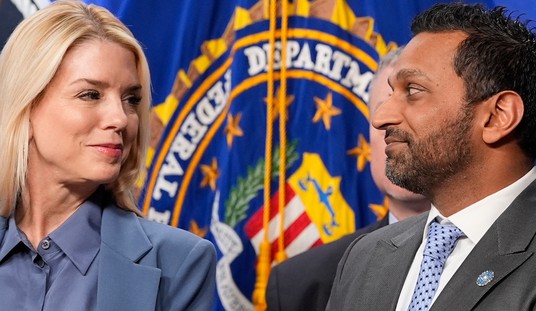This morning Ed wrote about the results of the Biden 90-day investigation into the origin of COVID. The report itself is still secret but it sounds as if there’s nothing much new in it. The intel community still can’t decide whether the lab leak theory or the natural transfer theory is more credible at this point. Meanwhile, the WHO team responsible for the investigation in Wuhan earlier this year published a letter today saying their search for answers has stalled thanks to China.
The window of opportunity for conducting this crucial inquiry is closing fast: any delay will render some of the studies biologically impossible. Understanding the origins of a devastating pandemic is a global priority, grounded in science…
The Chinese team was and still is reluctant to share raw data (for instance, on the 174 cases identified in December 2019), citing concerns over patient confidentiality. Access to data on these cases was not specified in the mandate, although the WHO had demanded it during the investigation, and has done so since . The legal and possible other barriers could not be addressed in the short time frame of our visit…
The search for the origins of SARS-CoV-2 is at a critical juncture. There is willingness to move forward from both the WHO international team and the Chinese team.
Crucially, the window is rapidly closing on the biological feasibility of conducting the critical trace-back of people and animals inside and outside China. SARS-CoV-2 antibodies wane, so collecting further samples and testing people who might have been exposed before December 2019 will yield diminishing returns.
The idea that China is too concerned about “patient confidentiality” to release data on early COVID patients is just laughable. For one thing, it wouldn’t be much effort to remove identifying data like names and addresses from relevant files. But more significantly, we all know China is a surveillance state which monitors the behavior of citizens in the real world and online. So claiming they are too determined to protect privacy rights to share data is obviously a lie. Of course this letter is intended to be diplomatic so it doesn’t say that.
There’s subplot in the letter about the lab leak theory. The authors claim they did investigate it but ultimately dismiss it again.
We found the laboratory origin hypothesis too important to ignore, so brought it into the discussions with our Chinese counterparts. And we included it as one of the hypotheses for SARS-CoV-2 origin in our report…
We spoke to the leadership and staff at the three Wuhan labs handling coronaviruses: the Wuhan Institute of Virology, the Chinese Center for Disease Control and Prevention (CDC) in Wuhan, and the Hubei provincial CDC. We reviewed published work from these labs to assess their scientific history of working with coronaviruses related to severe acute respiratory syndrome (SARS)…
Our critics have also suggested that the report dismisses the possibility of a lab leak. A laboratory origin hypothesis is presented in the pathway model in Figure 5 on page 119 of the report; we explicitly state in the report that it is possible. We held frank discussions with key scientists in the relevant Wuhan institutions — a line of inquiry that exceeded our original mandate. When we reviewed the responses to our questions on this issue, and all other available data, we found no evidence for leads to follow up; we reported this fact…
There have been calls from scientists for further investigation of the lab-leak hypothesis5. And there has been a wave of media items that give equivalence to the weight of evidence for a lab leak and for emergence through an intermediate host — an equivalence that the currently available data do not support, in our view.
All of this is pretty vague but it boils down to this. The WHO team talked to Chinese scientists at the labs who told them everything was ship-shape and that was the end of it. No evidence for leads to follow up therefore they dropped it. The fact that Peter Daszak, a member of the team who worked with the WIV, said multiple times before going to Wuhan that the lab leak theory wasn’t credible is obviously significant but the letter doesn’t mention it.
Whatever the actual origin of the virus, China is clearly not interested in helping the world find it. The AP reports they are telling the world to look elsewhere for the origin:
China said Wednesday that officials should “concentrate on other possible avenues that may help trace the origin” of COVID-19 and suggested studies should be pursued in other countries.
Fu Cong, a director-general in China’s Foreign Ministry, agreed it was a “pity” the search for COVID-19’s origins had stalled but said it wasn’t China’s fault. “China has always supported and will continue to participate in the science-based origin tracing efforts,” he said.
He accused the U.S. of “hyping the lab leak theory” and trying to shift the blame onto China, and implied the coronavirus might be linked to high-level American research labs, suggesting the United States invite WHO to investigate some of its installations.
Finally, it’s worth noting that some of the best evidence we have at this point probably does come from investigations taking place outside China. Last week the Economist wrote about some of that evidence:
There is increasing evidence suggesting early infections elsewhere. These cases would have been exported from China; no virologists doubt that Hubei was where the virus got going within humans. But if circulation in Hubei goes back further than thought and cannot be directly assessed through studies there, the presence of cases elsewhere offers an alternative way to get an idea of the timing. If a specific travel link were identified, that might help identify a group in Hubei which was infected early on.
A recent study of blood samples from 9,144 adults in 12 different regions of France found seven which contained antibodies against sars-cov-2, all of them taken in November 2019. An Italian lung-cancer screening trial has found samples taken in September 2019 which seem to contain anti-sars-cov-2 antibodies. Another antibody study suggests the virus was circulating at a low level in northern Italy at the same time, notably in Lombardy, a region which has close connections to Wuhan through the garment trade, and saw Europe’s first major outbreak of covid-19 in March 2020.
Antibody tests can give false positives. In a preprint published on August 6th by the Lancet, researchers in Lombardy reported on looking instead for sars-cov-2 gene sequences. Examining 289 swabs and urine tests taken from people who had presented with a rash as far back as the second half of 2019, they found sars-cov-2 sequences in 13, the earliest of which was taken on September 12th.
All of this is potentially significant because if the virus was spreading across borders as early as September then the spread at the wet market in December potentially becomes less of an origin point and more of an early super-spreader event. But I guess the bottom line here is that time is running out to get to the truth, whatever that is, and China is clearly prepared to let that happen.








Join the conversation as a VIP Member